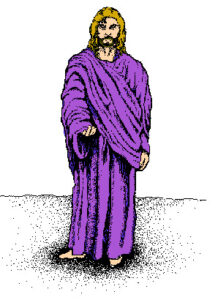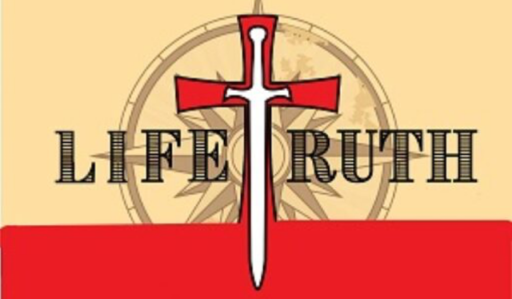Looking forward to what Christians have to be thankful for this year, Keith examines the best good news that anyone could hope to receive. Better than any political party. Better than any concept that our society or culture can lay on us. It’s the truth that Jesus was resurrected from the dead.

Background Passage: John 20:1-18
Jesus’ disciples did not anticipate or believe the resurrection had happened at first, but when they saw the evidence, God opened their eyes to give them confident faith.
Introduction
Is faith just a childish belief?
Even a child can have childlike faith. As people mature and develop, our faith should also mature. It does this by responding to doubts. Faith grows through the exercise of the pushback that our doubts present. Sometimes it just takes clinging to faith, trusting that answers will be revealed in time.
The hinge point of faith
If Jesus was resurrected as the Bible says He was, then it should be the guiding truth of our lives, changing the way we interact with God and with each other. If the resurrection was a well-implemented plan to deceive people for multiple generations, then we are in far worse shape than we could ever imagine. But our faith is not blind faith. Jesus’ resurrection is attested in Scripture by eyewitness testimonies.

1. Disbelieving the Resurrection
(John 20:1-2 CSB)
1 On the first day of the week Mary Magdalene came to the tomb early, while it was still dark. She saw that the stone had been removed from the tomb.
2 So she went running to Simon Peter and to the other disciple, the one Jesus loved, and said to them, “They’ve taken the Lord out of the tomb, and we don’t know where they’ve put him!”
An unlikely witness
Mary Magdalene, a woman with a sordid past.
- Women in the culture were not legitimate witnesses.
- She had a reputation with demons, and another ill reputes.
If one were to fabricate a fantastic story with the intent to deceive the world, >you wouldn’t choose this witness for your record. >You would choose a more reliable witness in the eyes of the community. But John delivered His gospel message like a physician delivering a diagnosis: he honestly presented the facts.
Devoted love
After Jesus cleansing Mary as no one else could, she became a loyal follower. She is recorded as traveling with the apostles. In her compassion in tending to his body in the burial ritual, she was blessed to be the first to witness the empty tomb. Before any government leader. Before any religious leader. Even before any men in Jesus entourage.
God used the weak to shame the strong, the foolish to shame the wise, the unexpected to carry the gospel message first.
In what ways have you seen God use unexpected or unconventional people for the sake of the gospel?
Doubt, vs earthly explanation
Mary, at first, believed there must have been some human explanation for Jesus’ missing body. She saw the moved stone. She saw the empty grave but immediately sought a practical explanation. They took his body! We don’t know what happened! She didn’t believe the resurrection yet.
If Jesus’ body were simply missing, as Mary Magdalene assumed, then Christians should be pitied above all because we are believing a lie and are still in our sins (1 Corinthians 15:17-19). If Jesus didn’t do what He said He would do—rise from the dead after three days (John 2:19-22)—then He couldn’t be who He said He was, which is the Messiah, the Son of God. But He did, and He is!
Commentary:
Theologically, Christ’s resurrection cannot be separated from his crucifixion. For what the crucifixion accomplished, that is, Christ’s substitutionary sacrifice for our sin is sealed and accepted by God’s raising Jesus from the dead. Christ’s resurrection is also his divine vindication. At the same time, through the resurrection, Satan and the evil world powers behind Christ’s crucifixion stand judged and condemned. Moreover, all those who are identified with Christ through faith, Jesus’s first followers as well as those of us who have not seen and yet have believed, have spiritually spoken, already shared in both Jesus’s crucifixion and his resurrection.” 2
How should we approach questions about Jesus’ resurrection, whether those questions are ours or those of others?
- (with honesty and compassion;
- with faith in God and His Word to answer sufficiently what needs to be answered;
- with recognizing that our human understanding is insufficient to grasp spiritual matters;
- with prayer and humility to submit to our sovereign and omniscient God)
2. Seeing Evidence of the Resurrection
(John 20:3-7 CSB)
3 At that, Peter and the other disciple went out, heading for the tomb. 4 The two were running together, but the other disciple outran Peter and got to the tomb first. 5 Stooping down, he saw the linen cloths lying there, but he did not go in. 6 Then, following him, Simon Peter also came. He entered the tomb and saw the linen cloths lying there. 7 The wrapping that had been on his head was not lying with the linen cloths but was folded up in a separate place by itself.
Love overcomes doubt
Peter and the other disciple, most certainly John) demonstrated their love for Jesus in their race to the tomb. Just by associating with Jesus, they could be punished if religious leaders found them. They were experiencing some of the darkest days ever, and in deep grief at the loss of their leader and master. They had been constant companions of Jesus. Yet the news from Mary Magdalene brought two disciples racing out of their hiding place to the tomb.
Commentary:
What would have been impossible to prove in court with Mary Magdalene and the women with her was remedied in this situation. “The presence of two male witnesses rendered the evidence admissible under Jewish law (cf. Deuteronomy 17:6; 19:15).” 3
What are some actions the empty tomb ought to motivate believers to take today?
- (sharing the gospel with boldness and urgency;
- repentance of sin and renewed faith to resist the lure of temptation;
- professing faith in Christ and being baptized;
- pointing people to Jesus as the One deserving all glory, honor, and praise)
Unlikely body snatchers
Think of the burial garments being left inside the tomb and why it was unlikely that anyone would steal His body at this point.
The Jews had no reason to take the body, neither did the Romans. The disciples were surprised by the empty tomb. If it were grave robbers, they would have been after gold or valuables, which Jesus didn’t have.
If someone took the body, why strip it out of the linen burial cloth? Why carry a smelly, beaten, and lacerated body around? The only remaining situation is that Jesus did the thing he promised. He was resurrected from the dead.
Comparing this to Lazarus being revived, Jesus linens were left in the grave, while the body was missing. Lazarus was commanded to rise. He did, but he was still in his linen burial clothes and had to have help getting unwrapped. His burial clothes ended up outside his tomb along with his body.
3. Developing Belief in the Resurrection
(John 20:8-10 CSB)
8 The other disciple, who had reached the tomb first, then also went in, saw, and believed. 9 For they did not yet understand the Scripture that he must rise from the dead. 10 Then the disciples returned to the place where they were staying.
Belief over understanding
John believed in Jesus’ resurrection without a full understanding of Scripture He saw it for himself, but at the moment he didn’t connect it to the prophecies Jesus told his disciples about being raised from the dead. Neither Peter nor John could comprehend. All they knew and could believe was the empty tomb before their eyes.
There are many truths from Scripture Christians believe that still hold details far beyond our comprehension, and that is okay. This is the essence of faith—“seeing” without seeing. John believed, at first, not because of the weight of prophecy that he had studied or because He saw the risen Jesus but because he saw the empty tomb.
Today, we have seen the risen Savior through God’s Word, and our faith, if we believe, is a “seeing” faith.
Faith does not equate to comprehensive knowledge. We may know a multitude of facts about Jesus but still be far from Him—mere intellectual knowledge does not equate to saving faith.
Essential Doctrine
Faith”:
Biblical faith is the resting, or trusting, in Christ alone for salvation (John 3:16-21). More than being simply a mental agreement of historical facts, genuine faith begins with a recognition and confession of the truth of the gospel (1 John 4:13-16), followed by a receiving of Christ as Lord and Savior of one’s life (John 1:10-13). Biblical faith is not blind faith, for it rests on the historical life, death, and resurrection of Christ.
Truth that saves
Sin and death have “already” been defeated in Jesus’ resurrection, but this victory is “not yet” fully expressed and won’t be until Jesus returns.
How should faith in the resurrection of Jesus Christ impact our everyday lives?
- (we should live as if our salvation is already secure in Jesus, so we are not trying to earn our salvation but for living in gratitude because of it;
- we should live each day with abundant hope that no matter what happens, God is for us and Jesus will raise us on the last day;
- we should go through our day believing we have the best good news to share with people who are struggling and suffering under the curse of sin)

Conclusion
every one of God’s promises is ‘Yes’ in him. Therefore, through him, we also say ‘Amen’ to the glory of God” (2 Corinthians 1:20).
Because the tomb is empty! All of God’s promises are true. Through our union with Him by faith, Christ has made us victorious over death with His promise to resurrect us upon His return,
Having removed sin’s curse over us. He has reconciled us to God every one of God’s promises is ‘Yes’ in him. through our union with Him in His life, death, and resurrection. This is the good news that we must not keep to ourselves. Jesus offers a new life both now and forever to those who trust Him. May we not grow weary in telling the story of Jesus’ work on the cross
Credits
consider supporting the podcast through our Patreon page.
feel free to drop us an email, use the comments on the show note page, or call our voicemail at (401)753-4844.
Follow us on social media, and join us in what we’re doing there.
Twitter: @HPNCast
Facebook Page: @LifeTruthPage
Facebook Group: HPNCast Community

Scripture quotations marked CSB have been taken from the Christian Standard Bible®, Copyright © 2017 by Holman Bible Publishers. Used by permission. Christian Standard Bible® and CSB® are federally registered trademarks of Holman Bible Publishers.
Based on a lesson outline from
The Gospel Project® for Adults
Leader Guide CSB, Unit 27, Session 1
© 2020 LifeWay Christian Resources
“Scripture taken from the NEW AMERICAN STANDARD BIBLE®,
Copyright © 1960,1962,1963,1968,1971,1972,1973,1975,1977,1995
by The Lockman Foundation. Used by permission.”
Podcast: Play in new window | Download (Duration: 51:00 — 46.7MB)
Subscribe: Apple Podcasts | Amazon Music | Podchaser | RSS | More
